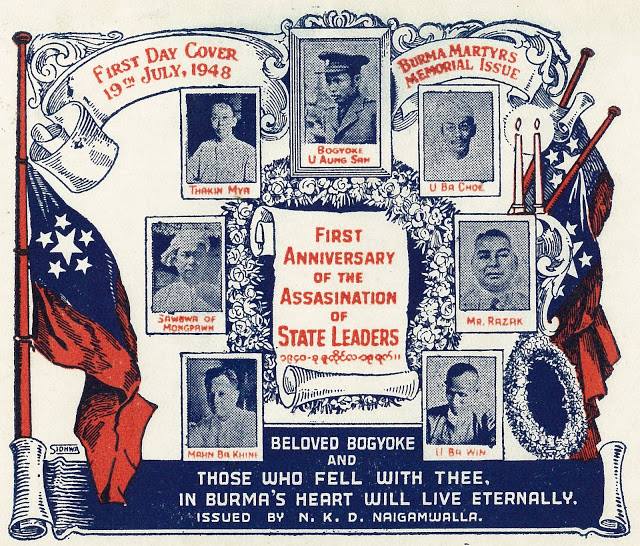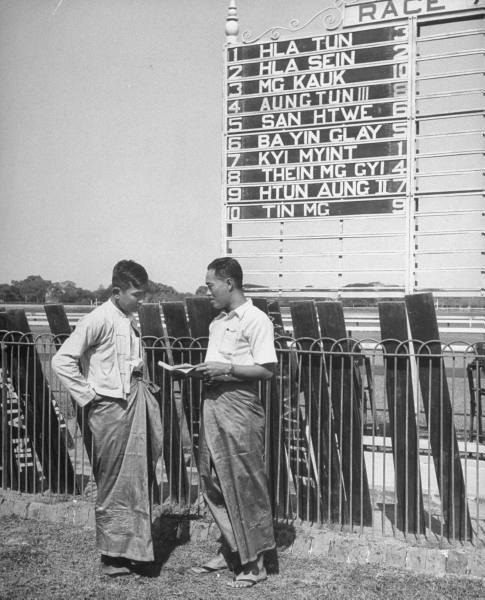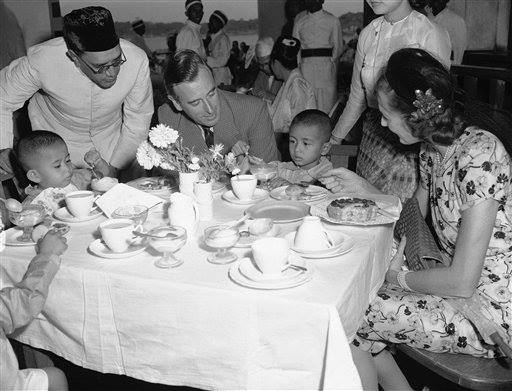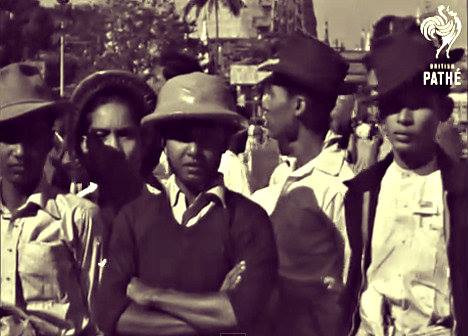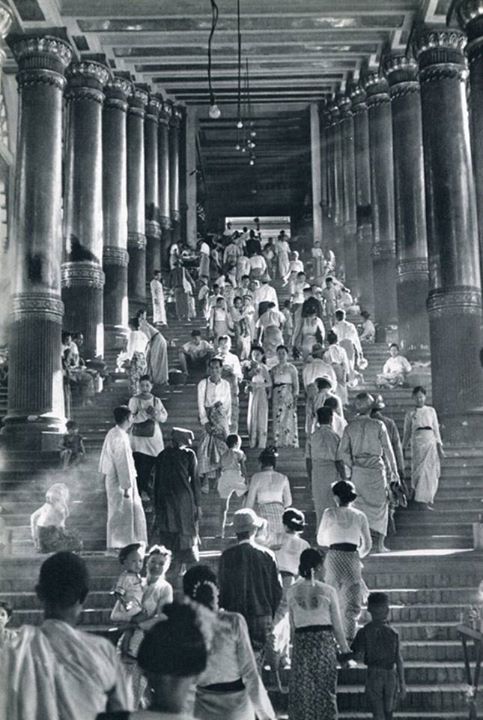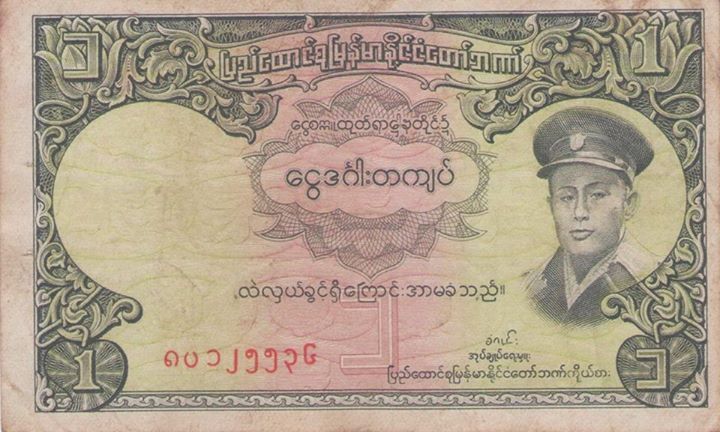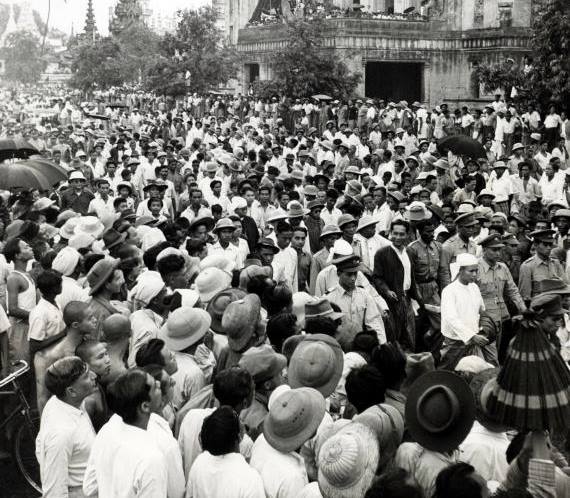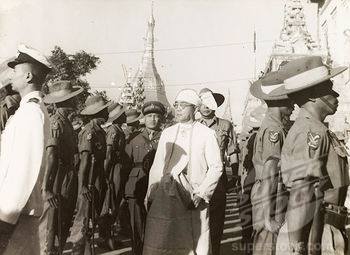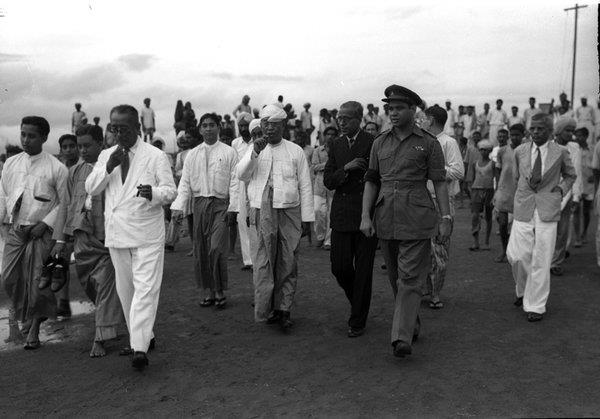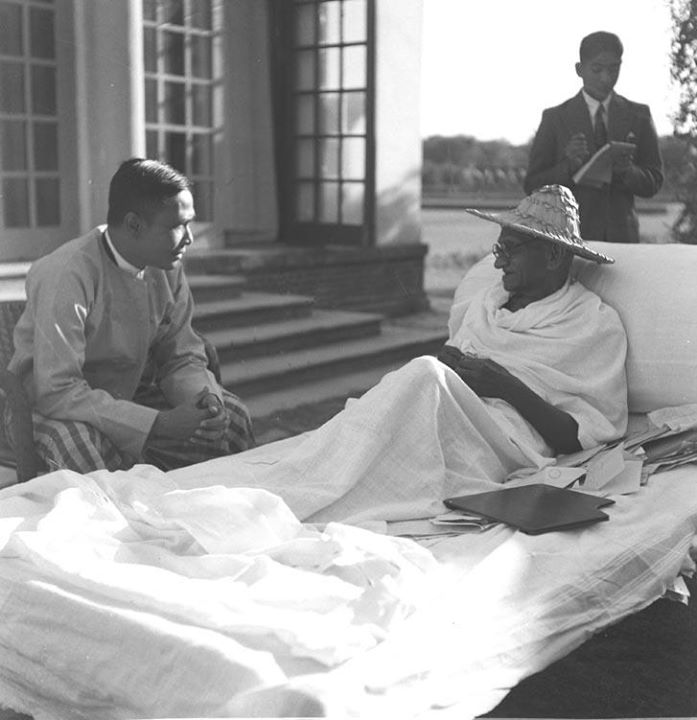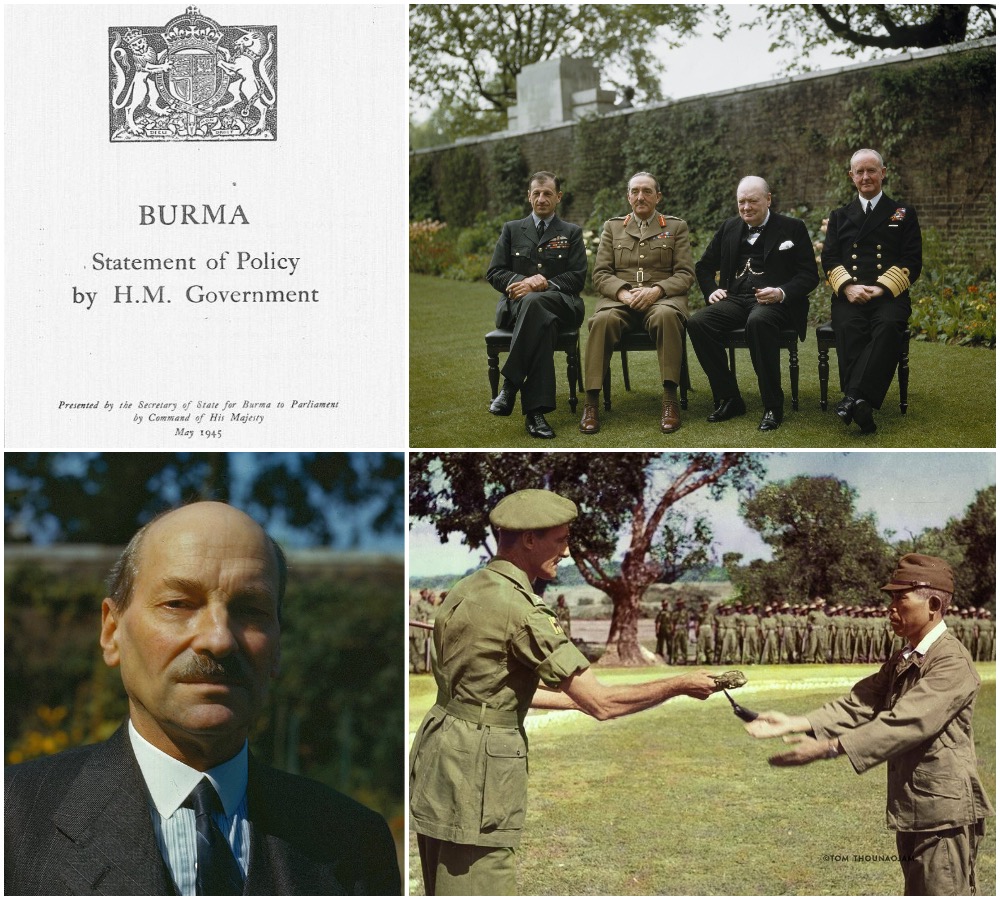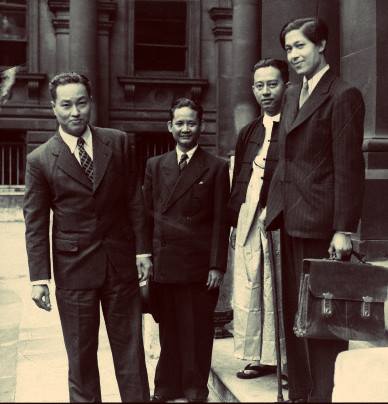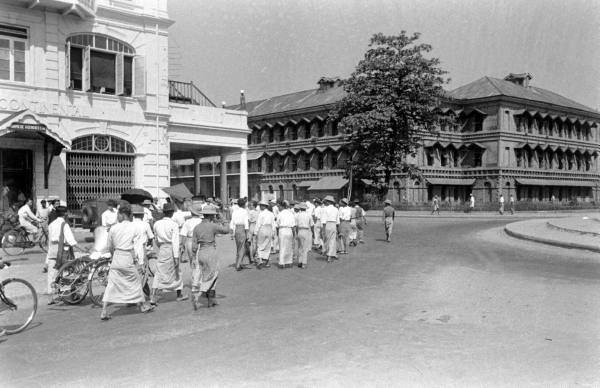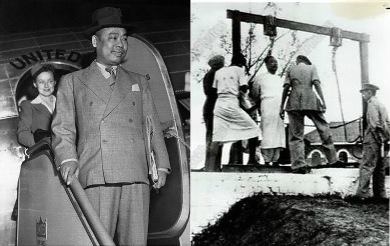Independence and Civil War (1945-1951)
Historic Events
The 1948 Government of Burma was genuinely multi-ethnic
This photograph, taken in August 1948, shows the first President of independent Burma, Sao Shwe Thaik and Army Chief General Smith Dun inspecting troops in front of the Rangoon Corporation building after the declaration of martial law. The communist ("White Flag" and "Red Flag") People's Volunteer Organization and Mujahideen insurrections were in full swing. Karen, Kachin, and Chin battalions were fighting Burmese communist and PVO militias up and down the Irrawaddy valley. It was also a time (the only time)...
Read MoreForeign minister U E Maung’s Visit to India 1949
This photograph shows Burmese Minister of Foreign Affairs, U E Maung, arriving at Delhi airport in September 1949, together with the Burmese ambassador to India, Sir M.A. Maung Gyi, and other Burmese and Indian officials. U E Maung and Sir M.A. Maung Gyi are both smoking cheroots, something not common at VIP airport arrivals any more.
Read MoreU Nu with Gandhi in Delhi 1947
The struggle against British colonialism is a shared history of Burma and India. Mahatma Gandhi visited Rangoon three times: in 1902, 1915, and 1929. He had a big impact on Myanmar politics and Myanmar had an important impact on him. Gandhi wrote about how these trips influenced his thinking, on colonialism, and on the role of women. His close friend and patron since student days in London was Dr. Mehta who lived on Mughal Street and later Shwedagon Pagoda Road. ...
Read MoreWhite Paper on Burma
On 17 May 1945 the British government issued its "White Paper" on the future of Burma. Burma's Anti-Fascist Organization (later Anti-Fascist People's Freedom League, AFPFL) under General Aung San opposed the programme outlined in the White Paper, leading first to a stand off against the returned British authorities, then to negotiations in London in January 1946 and finally independence outside the Commonwealth in 1948. The White Paper proposed the following: (1) A period of "direct rule" by the Governor (assisted...
Read MoreGeneral Aung San in London
This photograph shows General Aung San at the Dorchester Hotel in London during negotiations with the UK government in January 1947. He is flanked by Thakin Mya and U Tin Tut (the delegation's principal negotiator). The meetings resulted in the signing of the Aung San-Attlee Agreement, which outlined the conditions for Burma's independence from Britain and was the moment of General Aung San's greatest triumph. Just six months later, Thakin Mya would be killed together with General Aung San, and...
Read MoreA Shared History of India and Burma Independence
India became independent from the British Empire on 15 August 1947. The country was partitioned and the new state of Pakistan was created at the same time. India and Burma immediately established diplomatic ties, but as Burma was then not yet an independent republic outside the Commonwealth, the country was represented in New Delhi by a High Commissioner. Burma's road to independence was intimately tied with India's. Modern Burmese politics began with the Montagu-Chelmsford reforms of 1917 and the fear...
Read MoreGeneral Ne Win in UK 1949
This photograph, taken in July 1949, shows General Ne Win (far left) at the Foreign Office in London together with U Hla Maung (then Burmese Ambassador to Thailand), Bo Setkya, and Burmese Ambassador to the UK, U Ohn ("San Shay"), who translated for General Ne Win. They were there to meet British Foreign Secretary Ernest Bevin as part of a week-long visit. General Ne Win then went on to Washington. In 1949, General Ne Win was Deputy Prime Minister as...
Read MoreWarless Days of Myanmar
From 23 December 1941 (when the Japanese began their invasion of Tenasserim and launched an aerial raid over Rangoon, announcing the arrival of World War Two in Burma) until today, Myanmar experienced a total of 31 months without war - from August 1945 when the Japanese surrendered to the Allies to March 1948 when the Communist insurrection began. It is impossible to understand future options in Myanmar without first appreciating the legacies of more than 70 years of armed fighting. ...
Read MoreAnti-Government Demonstration in 1949
This photograph, taken in 1949 on the corner of Sule Pagoda Road and Montgomery Street (now Bogyoke Aung San Street), shows an anti-government demonstration. The government then controlled little outside Rangoon and much of the country was in the hands of the Communist Party of Burma, the Karen National Defense Organisation, and various militia. Le Maison Continental (a leading French restaurant) is partly visible on the left, the offices Burma Railways on the right.
Read MoreThe Hanging of U Saw
U Saw was hanged at Insein Jail on 8 May 1948 for the assassination of General Aung San and his colleagues. Mysteries still surround the assassination but U Saw's involvement is beyond doubt. He was buried in an unmarked grave within the jail. The photo on the left was taken during his 1941 trip to London and Washington as Prime Minister of Burma.
Read More